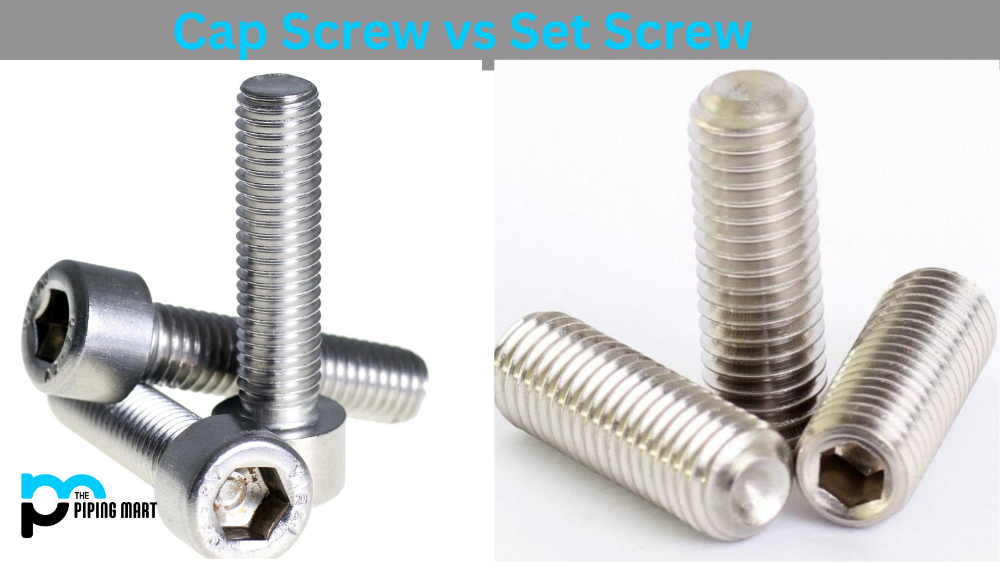Regarding fasteners, it’s easy to get lost in the terminology and technical jargon. Two common types of pins that are often used interchangeably are cap screws and set screws. While they may look similar, cap screws and set screws are used for different purposes and have distinctive features. In this blog post, we’ll explore the differences between cap screws and set screws and help you determine which type is better suited for your project.
What is Cap Screw?
A cap screw is a bolt with a threaded shaft and a hexagonal head designed to be tightened with a wrench. Cap screws are typically used in applications that require high strength and a tight fit.
What is Set Screw?
Set screws, on the other hand, are threaded fasteners with no head, intended to screw completely into a threaded hole or onto a shaft to hold a part securely in place.
Differences Between Cap Screw and Set Screw
Uses
One of the main differences between cap screws and set screws is their use. Cap screws are ideal for applications that require tight fastening and high torque loads. They are commonly used in heavy machinery, automotive, and construction equipment. Set screws, on the other hand, are often used to hold together small components or to prevent unwanted movement of a part.
Composition
Another difference between cap screws and set screws lies in their construction. Cap screws are made from more robust, durable materials, including stainless steel, carbon steel, and aluminium. Set screws, on the other hand, are usually made from softer materials such as brass, nylon, or aluminium. This is because set screws are not designed to hold high stresses or torques and are usually used in more delicate applications.
Installation
In terms of installation, cap screws require a tightening wrench, while set screws can often be drawn using only a screwdriver. This is because cap screws are typically larger and require greater tightening torque. Set screws generally are smaller and require less torque to hold the intended part. However, it’s essential to ensure that set screws are tightened securely to prevent movement or loosening.
Cost
Lastly, the cost is a factor to consider when choosing between cap screws and set screws. Cap screws are more expensive, used for more extensive and heavy-duty applications, made from more rigid materials, and require more complex installation. Set screws, on the other hand, are usually less expensive and are best suited to smaller applications.
Other Differences
- Cap screws are typically used to fasten two or more objects together, while set screws are used to secure an object.
- Cap screws have a cylindrical head with a flat top, while set screws have a conical head.
- Cap screws are available in various head styles, including hex, button, and flat, while set screws are only available in a hex head style.
- Cap screws are typically made from low-carbon or stainless steel, while set screws are usually made from hardened steel.
- Cap screws are available in various thread types, including coarse and refined, while set screws are only available in a rough thread type.
- Cap screws are typically tightened with a wrench, while set screws can be pulled by hand or twisted.
- Cap screws have a higher tensile strength than set screws, making them less likely to strip or break.
- Cap screws are more expensive than set screws and are not always necessary for every application.
Conclusion
In conclusion, when deciding whether to use cap screws or set screws, it’s essential to consider the application for which they’ll be used. If you require a tight fit and need to securely hold a part, you may need a cap screw. If you require a small, lightweight fastener that can be tightened easily, a set screw may be more appropriate. Remember, the cost is also a consideration, along with the materials, installation, and overall performance of the screw in your specific application. By understanding the differences between cap screws and set screws, you can make an informed decision and choose the best fastener for your needs.

Pipingmart is a B2B portal that specializes in metal, industrial and piping items. Additionally, we share the latest information and information about materials, products and various types of grades to assist businesses that are involved in this business.




